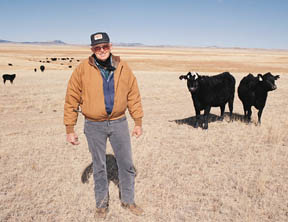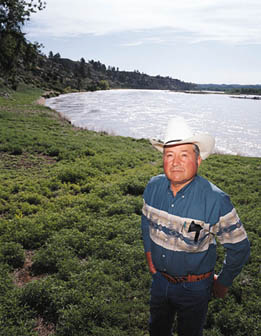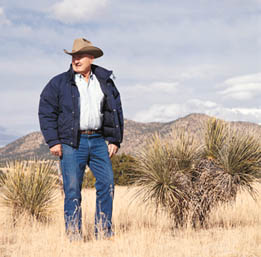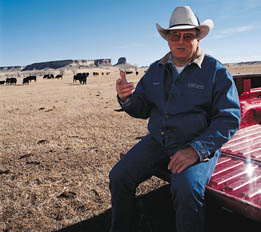|
|
|
| Subscriptions click here for 20% off! | E-Mail: info@rangemagazine.com |
|
|
||||||||||
THE GREENING
|
||||||||||
| During what is called the “Giant Power Era” of the mid-to-late
1960s federal hydropower administrators traveled the land preaching
a gospel of self-sufficiency. No more federal dams would be built
and few, if any, additions could or would be made to existing
facilities. If farmers and ranchers in Montana, Wyoming and the
Dakotas needed more electricity to meet their rapidly growing
demand, they would have to find a way to supply it themselves. The mandates of “giant power” quickly intersected President Jimmy Carter’s Project Energy Independence. The Middle Eastern oil crises of the early 1970s triggered a series of federal energy policies that forbade the use of natural gas in industrial processes and encouraged electric utilities to make use of either abundant domestic reserves of coal or to rely upon nuclear power generation in building new power plants. |
||||||||||
 |
||||||||||
|
As energy costs soared, so too did interest rates. Even with the
ability to draw upon the federal Rural Electrification Administration
(REA) to help finance power plant construction, rural America
paid premium prices in making its good-faith response to the Carter
energy policies.
|
||||||||||
| Bob Gillespie at age 64, has lived on the same ranch in Springer, New Mexico, all his life, a place where his grandparents homesteaded in the 1890s. The ranch is on rolling land “about 30 miles as the crow flies” to the mountains. At 6,500 feet, it can get “pretty cold” in the winter. July and August bring rain although there are live creeks which attract deer and an abundance of antelope. With son Randy, Bob runs a cow-calf operation plus up to 1,000 head of yearlings. Bob serves on the board of trustees for Plains Electric Generation & Transmission Co-op in Albuquerque, as well as Western Fuels. |
||||||||||
 |
||||||||||
| Bill Keller, Western Fuel's secretary- reasurer, ranches near Custer, Montana, where he was raised, and where he and his wife raised two sons and four daughters. (They have 13 grandchildren.) The family-owned Keller Land & Cattle Co. includes Bill, son Jeff, brother Dick, and nephew Stuart. Their red and black Angus feed on corn and alfalfa raised on the ranch. Winter wheat and barley are raised as cash crops. Game birds, such as wild turkey are plentiful on the Keller ranch. Bill has been elected to the board of several power cooperatives including Basin Electric Power Co-op headquartered in Bismark, North Dakota. |
||||||||||
 |
||||||||||
| Jay Cox of Winston, New Mexico, is Western Fuels’ longest-serving board member–20 years. His family settled in New Mexico in the 1880s, but much of what was the original family homestead was taken for what is now White Sands Missile Range. The Cox cattle ranch (“good browse, juniper and pinion”) is about 6-1/2 miles from the Continental Divide in the foothills of the Black Range. Jay’s father was born in the family home his brother Robert now occupies, while Jay runs his registered Hereford range operation with the help of his daughter Trudy and son-in-law Russell Freeman. |
||||||||||
 |
||||||||||
| Jack Finnerty runs his family ranch near Chugwater, Montana, with his wife Louise, and younger son, Dean. (Son Matt works for a crane company.) Their cow-calf operation includes both the ranch, where they put up their own hay, and a ranching partner-operation in the nearby mountains. No four-wheelers are used, just horses. Jack no longer rodeos, but Louise barrel races, and Dean is active in rodeo. Originally homesteaded by Jack’s dad, the ranch covers two creek bottoms and the rolling hills above on land which was once part of the vast Swan Land & Cattle Company. Jack is a longtime board member of Tri-State Generation & Transmission Association in Westminster, Colorado, as well as Western Fuels. |
||||||||||
|
To Subscribe: Please click here for subscription or call 1-800-RANGE-4-U for a special web price Copyright © 1998-2005 RANGE magazine last page update: 04.03.05 |
||||||||||
